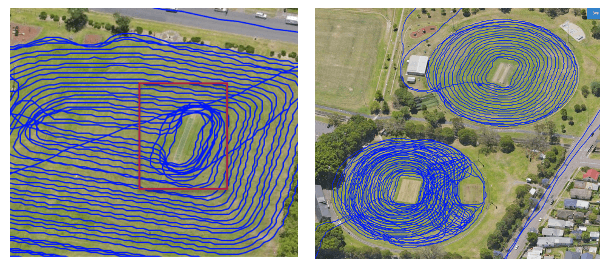When it comes to the residents of local communities, councils have a tough job in delivering every single service, both in a timely manner and to a high degree of quality. The level of essential services (waste, roads, environmental) varies in important between local governments, ensuring a level of engagement with the community is met.
Gone are the days where ‘dot on the map’ tracking was considered a technological advancement for a fleet-based organisation. Local councils are not only leveraging technology, but utilising the data produced to streamline operations, allocate resources and improve on the transparency in the high-quality services provided to strengthen community trust, and ultimately, a sense of belonging amongst residents.
We live in a fast-paced environment and our everyday lives are supplemented by technology in ways we as residents never realised. For local government businesses, service delivery for street maintenance, specifically street sweeping, is crucial.
As the population grows and urban areas are expanding, residents are expecting clean and well-maintained streets now more than ever. Proactive councils are now turning to innovative solutions like fleet management and telematics to enhance their street sweeping services.
The Challenge of Street Sweeping
Managing street sweeping and its operation is a complex task. A local council customer faced a significant challenge that saw an overwhelming number of residents calling to inquire about schedules, leading to frustrations and a high-volume of calls. This isn’t unique, as many local governments encounter similar concerns from their communities from issues like waste bins, recycling issues, or community disturbance calls.
To tackle this problem, they looked to Teletrac Navman to explore how type-approved telematics can supplement their fleet of street sweepers to provide data they need to improve scheduling with real-time information.
How Technology Augmented their Practices
After implementing telematics in a trial involving their fleet of street sweepers, the local council customer aimed to gather data on its operations like locations, streets serviced, and when the next schedule is due. This collaboration has resulted in a development of an innovative solution where an interactive street sweeping map is now available for residents.
From a glance, the map provides up-to-date status information about street sweeping in the area that are colour-coded in green or red to indicate when the streets were last swept and when they are next due. This transparency not only informs residents but also significantly reduces the number of inquiries to the council's call centre.
Benefits of Telematics in Street Sweeping
While the customer implemented technology and fleet management to improve their services to the community with regards to street sweeping, the application can be applied to many other services. Here are the top considerations for telematics your local government services could benefit from.
- Enhanced Communication
The first and most beneficial advantage is communication. The information that is transmitted in real-time from vehicles and assets can keep communities informed about services. Another council client utilised telematics on their mowers and was able to use geofences and high-definition tracking replays to prove when ovals and parks were cut, and how thoroughly they were maintained. When complaints or request were called in, this information was used as evidence to prove the completed works were to satisfaction. All this means that councils can provide information to residents instantly, reducing call volumes as trust is improved, saving time and enhancing satisfaction.

- Improved Operational Efficiency
This leads into the second benefit. With the real-time and historical information available at hand from vehicles, assets and operators, the data provides valuable insights, helping to analyse data on schedules and operations to improve service delivery. With telematics, data is formed into reports that can be scheduled and delivered direct to an email address, meaning staff are no longer required to compile spreadsheets. Furthermore, with tracking and journey planning, routes can be adjusted to improve community services like aged care or waste management. This is further improved by integrating sensors to gather bin-lift data to pinpoint missed bins, improve routes, time delays, and more.
- Data-Driven Decision Making
With the analytics provided to enhance operational efficiency, senior management within the local government teams can use this data to make more informed decisions. The data can be used to prioritise specific areas for services that are urgently required or figure out hotspots and habits of concern to provide proactive services and cleaner communities. This all helps to reduce complaints received and allocate resources more effectively to respond promptly to community requirements.
For example, another client needed to understand when equipment and machinery were working to accurately charge for use. When manually completed through reports, there were discrepancies and needed a way to easily capture hours of use for accurate invoicing. Utilisation reports via the fleet management system helped them better understand usage on all reported equipment on site and showed machinery that was underutilised meaning they could return equipment to be used at other sites.
- Future Expansion
Information is king. When it comes to technology, local government agencies can better understand movement, utilisation, routes and more at the click of a button. This opens the doors to expanding for the future, better planning for funding and provide services quick to improve budgets. Analytics and insights are available instantly to answer questions instantly and present an opportunity to implement a broader range of assets to enhance service delivery. Furthermore, with maintenance being taken care of digitally, assets are better maintained, improving longevity and the return on investment on costly equipment that sometimes budgets can’t cover new purchases.
The case of our local government customer illustrates how technology and fleet management solutions can be leveraged to improve community services and enhance community satisfaction. Addressing resident concerns through transparency and real-time data, councils can transform operations. Innovative solutions have the potential to improve communication across the business via data-driven decision-making.
Technology is now part of our everyday lives, and a cut on internet services can lead to a boring afternoon normally spent binge watching TV series or movies. Instead of continuing with what works for now, implementing technology into the field is a necessary evolution for councils looking to meet their communities needs.
The future of urban maintenance is here. If you wish to discuss opportunities with how telematics can be used within your local council operations, get in touch for a demo with our team of experts.

